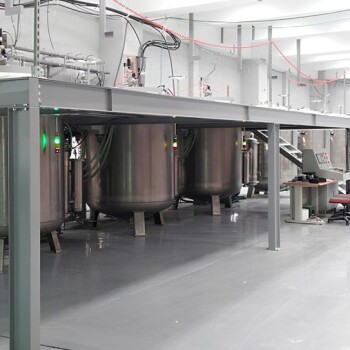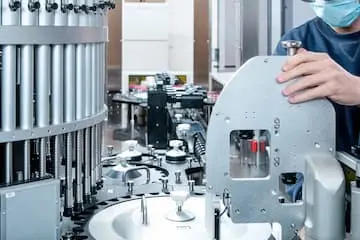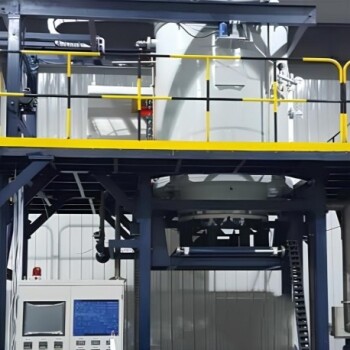Graphite vacuum furnaces are essential for high-temperature processes in industries such as metallurgy, electronics, and aerospace. Our product line includes the 2200℃ Graphite Vacuum Furnace, ideal for vacuum sintering, and the Large Vertical Graphitization Furnace, capable of reaching up to 3100℃ for graphitizing carbon materials. Other specialized furnaces include the Ultra-high Temperature Graphitization Furnace and the Horizontal High Temperature Graphitization Furnace, each designed for specific industrial needs.
Toggle Categories
Get Instant Support
Choose your preferred way to connect with our team
-
Get Free Quote Fill out form for detailed pricing
-
Send Email Detailed inquiry support
-
WhatsApp Quick mobile chat
Response Time
Within 8 hours on working days, 24 hours on holidays
graphite vacuum furnace

2200 ℃ Graphite Vacuum Heat Treat Furnace
Item Number : KT-VG

Horizontal High Temperature Graphite Vacuum Graphitization Furnace
Item Number : GF-01

Graphite Vacuum Furnace IGBT Experimental Graphitization Furnace
Item Number : GF-02

Graphite Vacuum Furnace High Thermal Conductivity Film Graphitization Furnace
Item Number : GF-03

Graphite Vacuum Furnace Negative Material Graphitization Furnace
Item Number : GF-04

Vertical High Temperature Graphite Vacuum Graphitization Furnace
Item Number : GF-05

Graphite Vacuum Continuous Graphitization Furnace
Item Number : GF-07

Large Vertical Graphite Vacuum Graphitization Furnace
Item Number : GF-08

Ultra-High Temperature Graphite Vacuum Graphitization Furnace
Item Number : GF-09
Why Choose Our Graphite Vacuum Furnaces?
Graphite vacuum furnaces are pivotal in achieving precise high-temperature treatments necessary for advanced material processing. Our furnaces are engineered with cutting-edge technology to ensure optimal performance, energy efficiency, and durability.
Key Features and Benefits
-
High-Temperature Capability: Our furnaces can reach extreme temperatures up to 3100℃, making them suitable for graphitization and sintering of carbon materials, carbon fiber materials, and other composites.
-
Uniform Heating: Designed with advanced heating elements and insulation materials, our furnaces provide uniform temperature distribution, which is crucial for consistent material properties.
-
Energy Efficiency: Utilizing graphite materials, our furnaces offer superior energy efficiency, reducing operational costs and environmental impact.
-
Durability and Longevity: Constructed with high-quality materials, our furnaces are built to withstand the rigors of high-temperature operations, ensuring a long service life with minimal maintenance.
-
Customizable Solutions: We offer tailored furnace designs to meet specific industrial requirements, ensuring that each furnace perfectly fits the intended application.
Applications
Our graphite vacuum furnaces are used in a variety of high-tech industries:
- Metallurgy: For the production of high-quality graphite products like electrodes and crucibles.
- Electronics: In the manufacturing of semiconductors and other electronic components.
- Aerospace: For the development of advanced materials used in aerospace applications.
Advanced Technology
Our furnaces incorporate advanced temperature measurement and control systems, ensuring precise and reliable operation. The use of W-Re thermocouples and infrared thermometers allows for accurate temperature monitoring, while the automatic thermocouple system enhances operational efficiency.
Why Graphite?
Graphite is chosen for its exceptional thermal properties, including high compressive strength, low density, and excellent thermal conductivity. These properties make graphite an ideal material for high-temperature applications, providing faster heating and cooling cycles, and reducing energy consumption.
Get in Touch
Interested in learning more about our graphite vacuum furnaces? Contact us today to discuss your specific needs and discover how our advanced furnace solutions can enhance your production processes. Leave us a message and our experts will be happy to assist you.
FAQ
What Is A Graphite Vacuum Furnace Used For?
What Are The Main Types Of Graphite Vacuum Furnaces?
How Does A Graphite Vacuum Furnace Work?
What Are The Advantages Of Using A Graphite Vacuum Furnace?
What Temperature Range Can A Graphite Vacuum Furnace Achieve?
What Industries Benefit From Graphite Vacuum Furnaces?
REQUEST A QUOTE
Our professional team will reply to you within one business day. Please feel free to contact us!
Related Articles

Why Your Ceramic Furnace Tubes Keep Cracking—And How to Choose the Right One
Tired of failed experiments from cracked ceramic tubes? Learn the real reason it happens and how to select the correct material (Alumina, Quartz) for your lab.

The Breakthrough in a Box: How Vacuum Tube Furnaces Eliminate Contamination in Materials Research
Frustrated by oxidation ruining your high-temperature experiments? Discover how the vacuum tube furnace creates a perfect, contamination-free environment, enabling breakthroughs.

Furnace Contamination: The Hidden Saboteur Ruining Your High-Value Parts
Discover why your heat-treating process fails on high-value parts. The issue isn't your settings—it's hidden furnace contamination. Learn the fix.

Why Your High-Temperature Furnace Elements Keep Failing (And How to Stop It)
Discover the hidden causes of MoSi2 heating element failure, like pesting and chemical attack, and learn how to achieve reliable, repeatable results.

From Crack to Complete: A Scientist's Guide to Eliminating Catastrophic Tube Furnace Failures
Prevent costly tube furnace bursts. Learn the key causes like thermal shock and material incompatibility, and discover the right strategy to ensure safety and data integrity.

Beyond 1000°C: How Precision Furnaces Conquer the Hidden Enemy of Repeatable Results
Struggling with inconsistent results from sintering or ashing? Discover how overcoming thermal instability with advanced muffle furnaces is key to reproducible research.

AI completes muffle furnace scientific research graphing in one minute.
How to use nano banana to create scientific illustrations

Risk-Proof Your Lab: How to Choose a Vacuum Pump That Avoids Costly Failures
Learn how to choose reliable lab vacuum pumps to avoid costly failures. Assess chemical risks, throughput needs & safety for optimal performance.

How to Select the Right Oil-Free Diaphragm Pump for Your Lab or Industrial Needs
Learn how to choose the right oil-free diaphragm pump for your lab or industry—balancing specs, chemical resistance, and lifetime costs.

How to Choose Laboratory Vacuum Pumps for Maximum Efficiency and Cost Savings
Learn how to choose the right lab vacuum pump for efficiency & cost savings. Compare oil-sealed vs. oil-free pumps & future-proof your investment.

Water Circulating Vacuum Pumps: A Practical Guide for Laboratory Applications
Discover the benefits of water circulating vacuum pumps for labs: chemical safety, low maintenance, and explosion-proof operation. Ideal for sensitive applications.

How to Choose Crucible Materials That Prevent Chemical Degradation in Vacuum Induction Melting
Learn how to choose crucible materials for vacuum induction melting to prevent chemical degradation and optimize alloy purity. Essential guide for industrial applications.

How Vacuum Induction Melting Prevents Catastrophic Material Failures in Critical Components
Discover how Vacuum Induction Melting (VIM) prevents material failures in aerospace, nuclear, and EV components by eliminating atomic-level contamination.

How Vacuum Induction Melting Elevates High-Performance Alloy Production
Discover how Vacuum Induction Melting (VIM) enhances alloy purity, reduces defects, and optimizes costs for aerospace and energy sectors.

How Vacuum Induction Melting Outperforms Traditional Methods in Advanced Alloy Production
Discover how vacuum induction melting (VIM) outperforms traditional methods in advanced alloy production, offering precision, purity, and cost savings.

How Vacuum Induction Melting (VIM) Transforms High-Performance Alloy Production
Discover how Vacuum Induction Melting (VIM) enhances alloy purity for aerospace, medical, and nuclear industries, reducing defects and costs.

How Vacuum Induction Melting Ensures Unmatched Reliability in Critical Industries
Vacuum induction melting (VIM) ensures metallurgical purity, durability, and efficiency in aerospace, nuclear, and critical industries. Learn why VIM outperforms traditional methods.

How Vacuum Induction Melting Powers Superior Material Performance in Critical Industries
Discover how Vacuum Induction Melting (VIM) ensures 99.99% pure alloys for aerospace and medical industries, boosting performance and compliance.

Polytetrafluoroethylene (PTFE): How low friction coefficient promotes industrial progress
Explore the unique advantages of polytetrafluoroethylene (PTFE)'s low coefficient of friction and analyze how it promotes progress and innovation in industrial technology in terms of reducing wear and improving equipment efficiency.

PTFE's high temperature and corrosion resistance: Why it is indispensable in industry
The unique advantages of polytetrafluoroethylene (PTFE) in high temperature and corrosion resistance analyze why it has become an indispensable material in industry, especially in applications in harsh environments.

